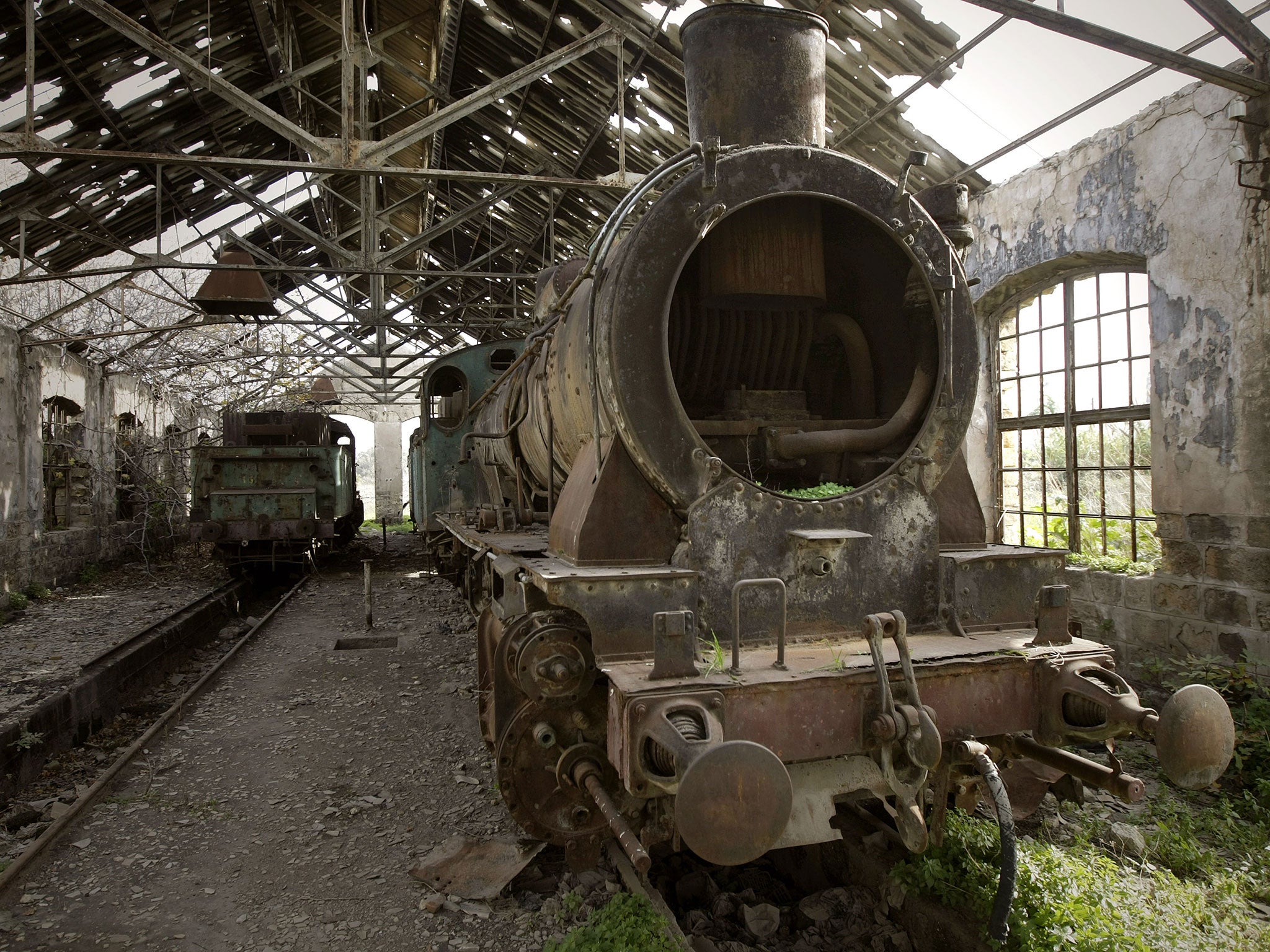All aboard the Lebanon express: Nostalgia and a desperate need could revive Arab world’s first railway
Lebanon hasn’t seen a train on its tracks since the last service, shuttling cement to the capital, ceased to run in 1997

Your support helps us to tell the story
From reproductive rights to climate change to Big Tech, The Independent is on the ground when the story is developing. Whether it's investigating the financials of Elon Musk's pro-Trump PAC or producing our latest documentary, 'The A Word', which shines a light on the American women fighting for reproductive rights, we know how important it is to parse out the facts from the messaging.
At such a critical moment in US history, we need reporters on the ground. Your donation allows us to keep sending journalists to speak to both sides of the story.
The Independent is trusted by Americans across the entire political spectrum. And unlike many other quality news outlets, we choose not to lock Americans out of our reporting and analysis with paywalls. We believe quality journalism should be available to everyone, paid for by those who can afford it.
Your support makes all the difference.Hundreds of train carriages dot the landscape, their locomotives overgrown with shrubs and trees. Green paint peels off the rusting metal frames, the bricks of the buildings that used to shelter them crumbling. Shattered roof tiles now cover its once humming factory floor.
The train station at Rayak was once home to the Arab world’s first rail line and a flourishing train factory. The abandoned site remains a symbol of Lebanon’s illustrious railway history, and a reminder of its bleak present.
The first train from Beirut to Damascus, in 1895, took nine hours to cover the 90 miles. A line to Aleppo was finished in 1909. Track was added throughout the 20th century, linking Beirut to Saudi Arabia through the Hijaz line and Istanbul through Aleppo. The allied forces added a line linking Haifa, Beirut and Tripoli during the Second World War. But following the outbreak of Lebanon’s civil war in 1975 the railways were thrown into disarray, and passenger services came to a complete standstill two years later.
Older Lebanese are nostalgic for the days when one could travel all the way to Paris by rail. Hayssam Bourji, 60, still remembers the sound of the trains passing by. “I used to ride the trains to Syria and back, just for fun. I would sit on top of the carriage,” he says. He has come to Rayak to show his two grandsons that a railway used to exist in Lebanon.
Visiting the station has only been possible since 2005; under the Syrian occupation it was used as a military base. The most valuable equipment was transferred to the Syrian railway museum at Qadam, and much of it was destroyed when the depot was bombed during the Syrian conflict.
Lebanon hasn’t seen a train on its tracks since the last service, shuttling cement to the capital, ceased to run in 1997. Yet the Train and Public Transport ministry still employs 370 people. More than 120 are bus drivers, but many of the remainder fill their days guarding various abandoned sites. Over time, development has encroached on the 90,000 hectares the ministry owns, with construction sites and billboards springing up on top of the railway all down the coast.
In a bid to supplement its £500,000 budget, the ministry has also sold trains for scrap and issued licences for the private use of stations. Several have been turned into bars. Trainstation, a pop-up nightclub which was last summer’s biggest opening in Beirut, saw the old Mar Mikhael station converted into an outdoor bar, complete with DJ spinning tunes from a locomotive.
Such modern use horrifies Elias Maalouf, the founder of Train Train, an NGO which aims to revive the crumbling rail network. “They welded projectors and fans on to the trains. It’s an insult to our heritage!” he exclaims. “That locomotive is one of five left in the world.”
Mr Maalouf has been trying to relaunch the line between the coast cities of Byblos and Batroun, to show the feasibility of having trains running again. “We need a success story,” he says. The project, with a budget of £430,000, should take only a matter of months to complete, but Mr Maalouf is still waiting for the green light from the Lebanese government.
Reviving the train line would relieve Lebanon’s heavily congested roads; the country’s very limited forms of public transport force Lebanese to rely largely on their own vehicles, private minivans and shared taxis to get around.
The EU’s European Investment Bank is funding a feasibility study into re-opening the Beirut-Tripoli line, the results of which should be published in 2016.
The dream is not a new one; every few years an initiative pops up. In 2002, a joint Syrian-Lebanese initiative went as far as buying new rails. As with previous efforts, the plan failed due to a lack of funding and political wrangling, and the rails lie unused in storage.
Yet Mr Maalouf and other train enthusiast still believe there’s a future for rail in Lebanon. “We have to show people that if we had railways 120 years ago, we can have them again now,” he says.
Join our commenting forum
Join thought-provoking conversations, follow other Independent readers and see their replies
Comments